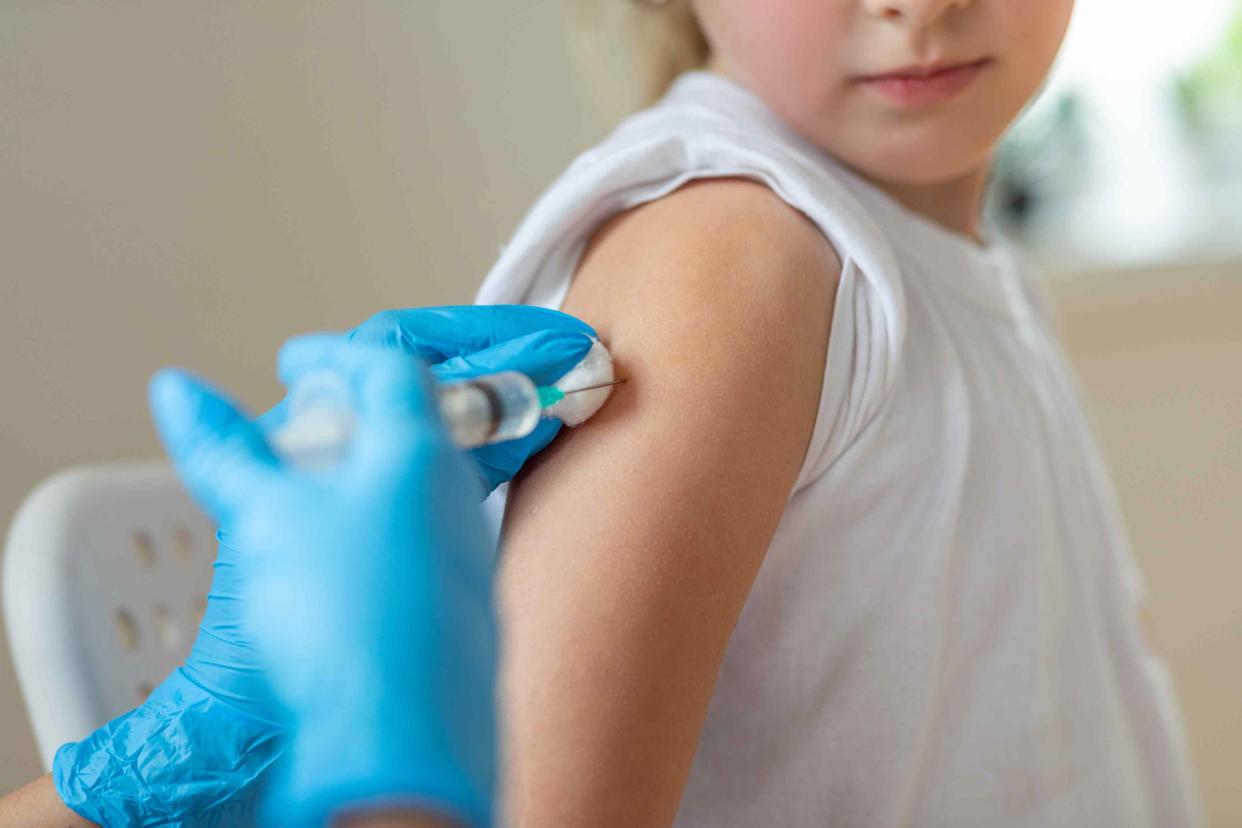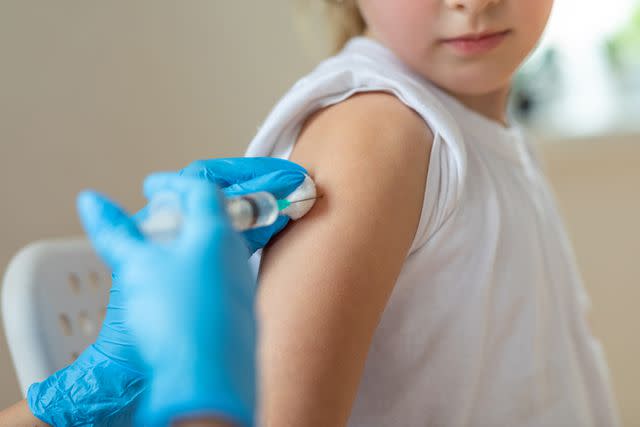What Is Measles?

bymuratdeniz / Getty Images
Medically reviewed by Josephine Hessert, DO
Measles (rubeola) is a highly contagious yet preventable virus that spreads through inhaling respiratory droplets from an infected person.
Measles is a serious illness that can be especially dangerous in babies and young children. Symptoms include high fever and a rash that usually starts on the face or hairline and then spreads downward throughout the body.
This article discusses the symptoms, diagnosis, treatment, and prevention of measles.

bymuratdeniz / Getty Images
Who Gets the Measles?
Measles causes about 100,000 deaths worldwide every year. Measles is very rare in the United States thanks to widespread vaccinations. Although public health officials had considered measles eliminated in the United States since 2000, outbreaks have increased since 2010.
In 2019, 1,274 individual cases of measles, mainly in the unvaccinated, were confirmed in 31 states, the most significant number of U.S. cases since 1992. In 2022, 121 cases of measles were reported in the United States in six jurisdictions.
Measles is most common in children. Unvaccinated children and adults; those who receive less than two doses of the measles, mumps, and rubella (MMR) vaccine; or anyone who recently traveled to areas with active measles cases are at higher risk of getting the disease. People with compromised immune systems are also at increased risk of catching measles.
Measles Symptoms: What Does Measles Look Like?
Measles symptoms usually begin seven to 14 days after coming into contact with the
virus and include:
High fever (may spike to more than 104 degrees F)
Cough
Runny nose
Pink eye (conjunctivitis)
Tiny white spots (Koplik's spots) inside the mouth appear two to three days after symptoms start
Flat, red spots known as measles rash appear three to five days after symptoms start
The measles rash is a hallmark of the disease and usually begins as spots on the face and hairline that travel downward throughout the body, sometimes joining together. Small, raised bumps might also appear on top of the flat areas. After several days, the measles rash should begin to fade.
While a rash is the primary symptom of both measles and chickenpox, there are differences in how the rash appears and spreads in each disease. The measles rash usually starts on the face or hairline and extends down through the body, while chickenpox rashes typically first appear on the chest, back, or face. The chickenpox rash starts with bumps that turn into fluid-filled blisters that later become scabs, while measles rashes are generally flat and, if raised, do not contain fluid.
Measles Diagnosis
Measles is usually considered as a potential diagnosis in patients who have fever, rash, and other symptoms of the disease, especially if they have recently been exposed to measles or traveled internationally. Blood tests or nose and throat swabs can be taken and sent to a lab to confirm diagnosis.
Measles Treatment: At Home Symptom Relief
There is no cure or antiviral treatment for measles. Children with severe cases are typically administered vitamin A by a healthcare provider. Giving an MMR vaccine within 72 hours of disease exposure to those who haven't been vaccinated may help prevent serious symptoms.
At-home treatments can be used to manage symptoms and help prevent further complications.
They include:
Rest
Drinking plenty of fluids
Eating well
Using medications such as Tylenol (acetaminophen) or Advil (ibuprofen) to reduce fever
Measles is highly contagious. Up to 90% of those exposed to the virus will become infected if they are not immune to it. Anyone with measles should stay isolated at home until four days after developing a rash to prevent spreading it to others and consult a healthcare provider about when it's safe to leave isolation.
Measles Complications
Anyone can get complications from measles. However, complications are more likely to occur in the following populations:
Children younger than 5 years old
Adults older than 20 years old
Pregnant women
People with compromised immune systems
The most common complications from measles are ear infections and diarrhea. Serious complications are less common but include:
Pneumonia (either from measles or through a secondary infection)
Encephalitis (inflammation or infection of the brain)
Increased risk of severe infections after recovery
Pregnancy complications
Measles infection can lead to a very rare, fatal central nervous system disease called
subacute sclerosing panencephalitis (SSPE). SSPE usually develops seven to 10 years after a person has recovered from measles. The disease may occur in those who develop measles before age 2.
Does the Measles Vaccine Prevent Measles?
The measles vaccine is considered the most important tool in preventing the disease. Two doses of the MMR vaccine are about 97% effective at preventing measles, while one dose is about 93% effective at preventing measles.
Before 1963, when the United States measles vaccination program was licensed, 500,000 cases were reported annually. However, actual cases were estimated at 3 million to 4 million a year. Among the 500,000 reported cases prior to the introduction of the vaccine, 400 to 500 people died, 48,000 were hospitalized, and 1,000 developed encephalitis from measles.
Widespread vaccination has led to more than a 99% reduction in measles cases in the United States since the pre-vaccine era.
It's now recommended children receive two doses of the MMR vaccine, with the first dose administered between 12 and 15 months of age and the second dose between the ages of 4 and 6 years. It's also recommended that teenagers and adults born after 1957 who have not yet been vaccinated against measles or gained immunity through having had measles receive one dose of the vaccine.
Outlook
For most people, measles resolve about one week after the onset of the rash without serious complications. However, about 1 in 5 people who get measles in the United States require hospitalization, and 1 to 3 out of every 1,000 will die, even with good medical care.

